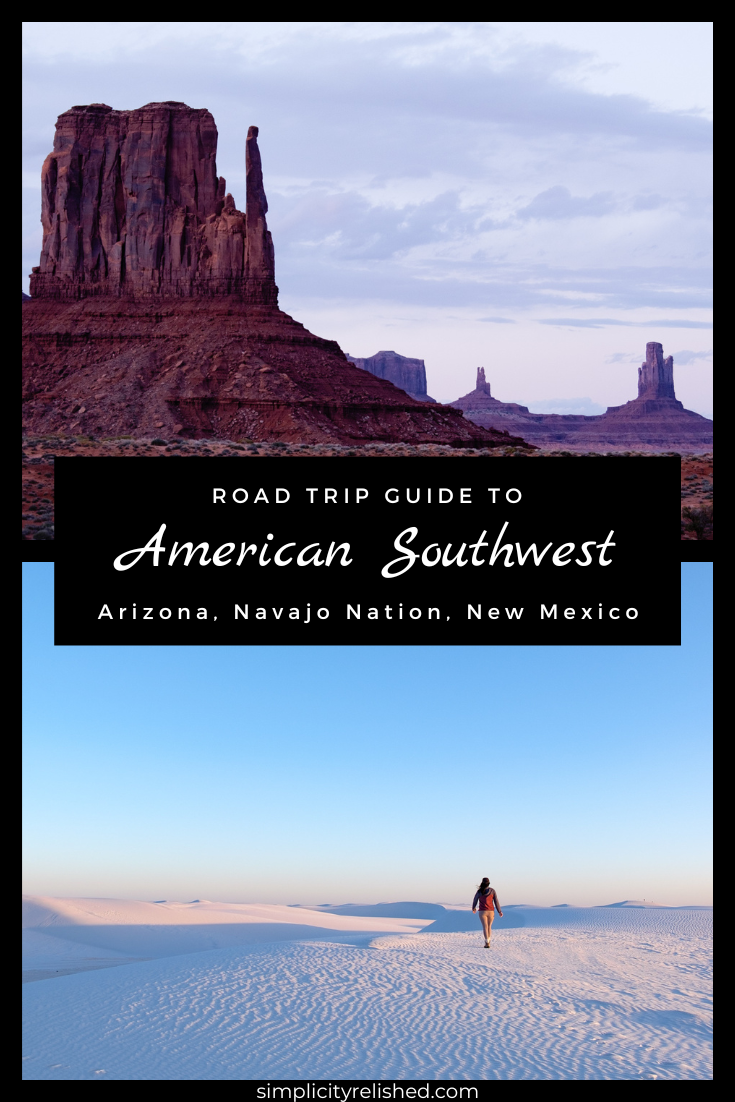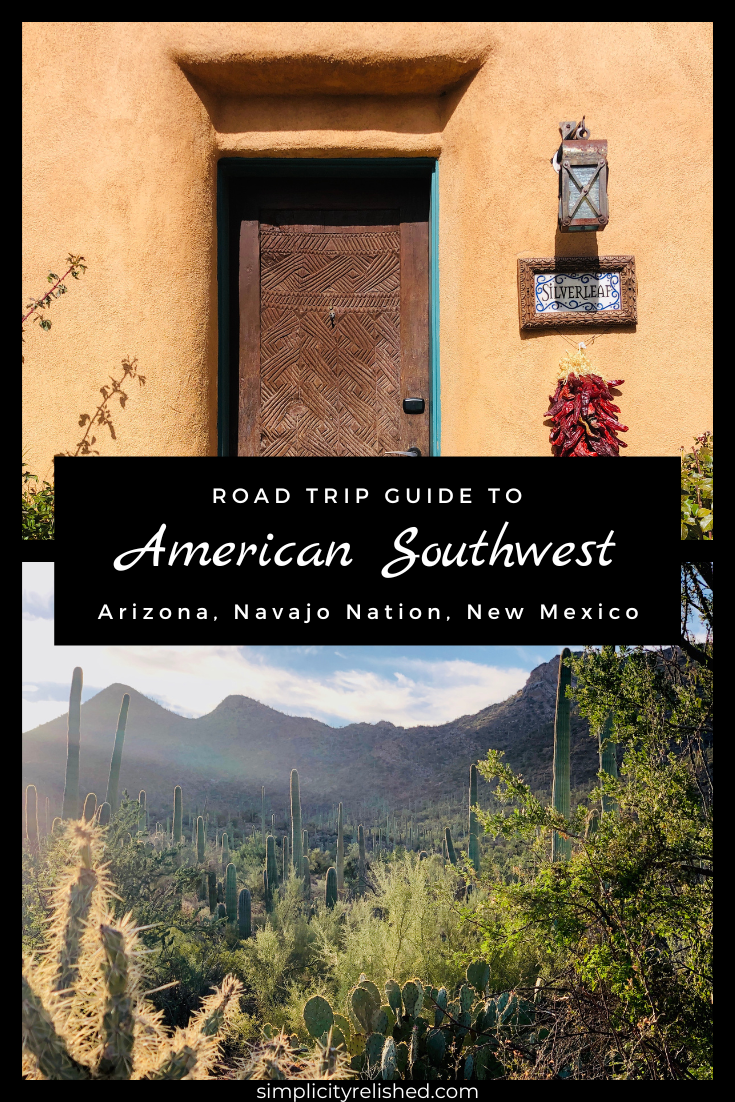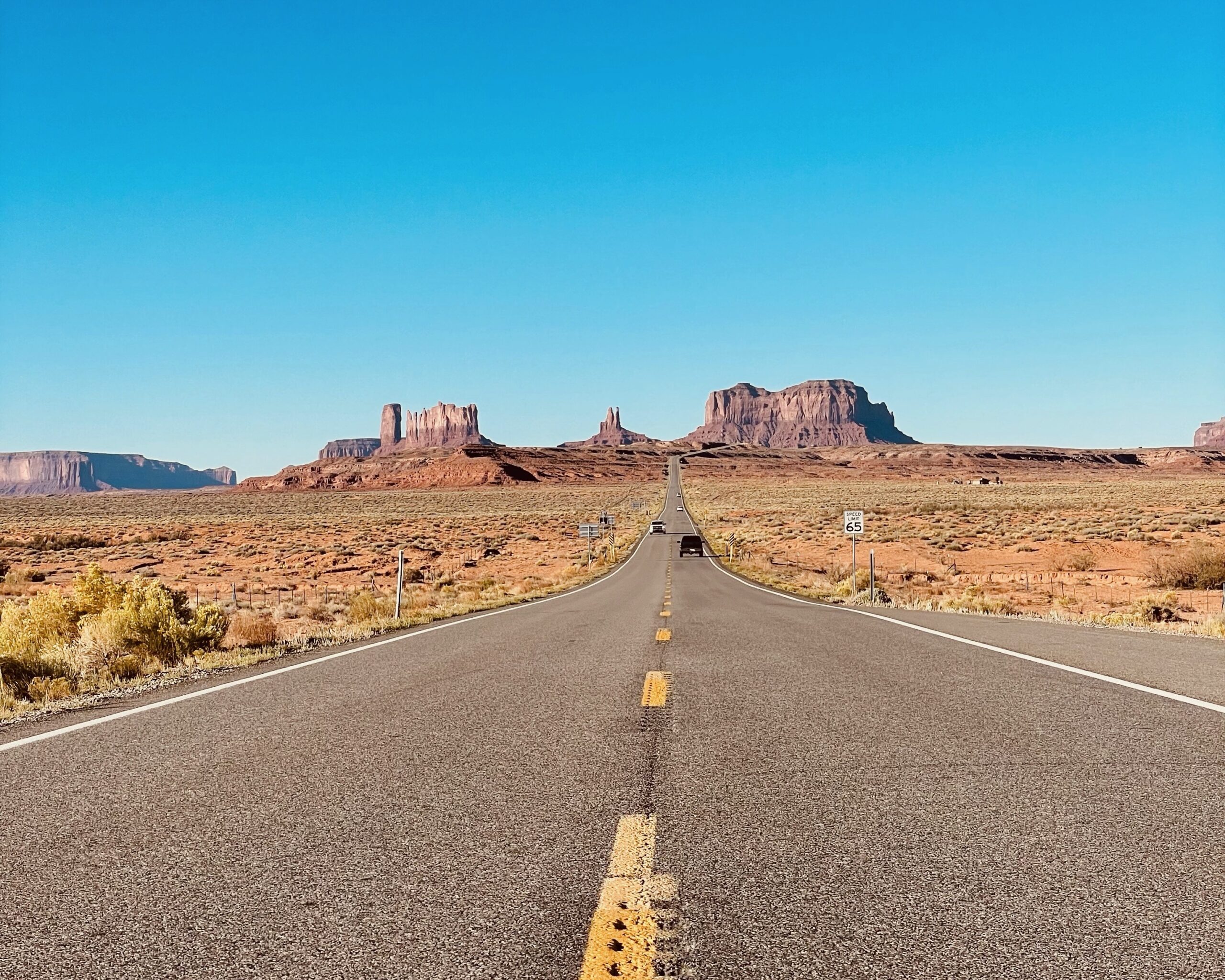With vibrant light, flourishing wildflowers, rugged rock formations and fascinating history, the region we call the American Southwest is bound to captivate any visitor, no matter what century they visit.
There are views here that are famous worldwide, and also many that are tucked away to be found and cherished by you alone. Between its roaring sunrises and serene silences, the region’s magic is almost too much for the human heart.
This is a region at the crossroads of Native, Spanish, Mexican, and US-American cultures and battles, with the architecture, food, and culture to reflect its complex story. It is important to acknowledge the many indigenous people who call this place home, and to take this opportunity to learn about them.
Beautiful artwork is on display at museums, boutiques, galleries, and trading posts, some newly made and others centuries old and harkening to the past. The Navajo (Diné), Hopi, Zuni, Apache, Acoma Pueblo, and other Nations have stewarded this land and learned its magic. What they know is precious to humankind.
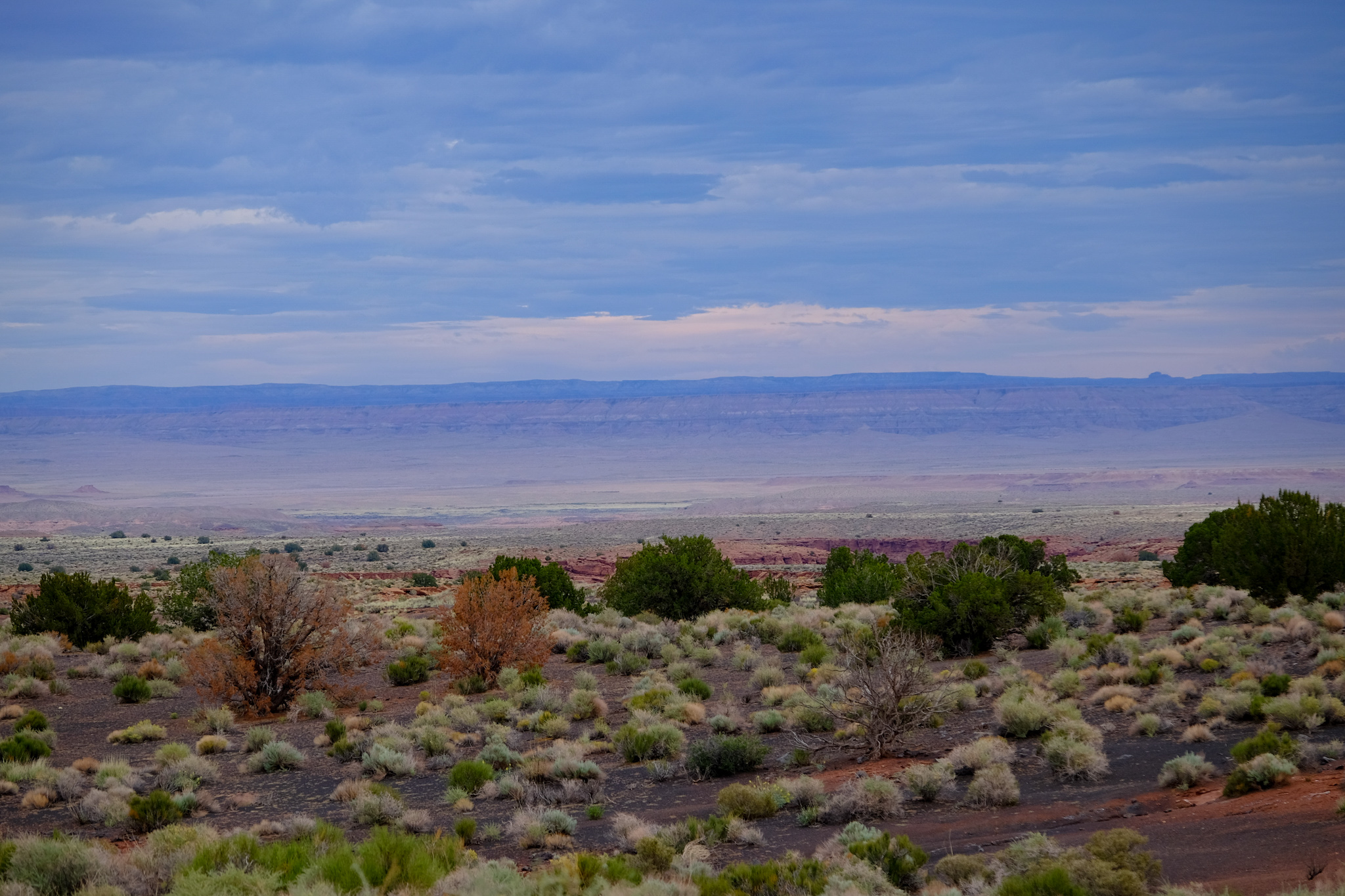
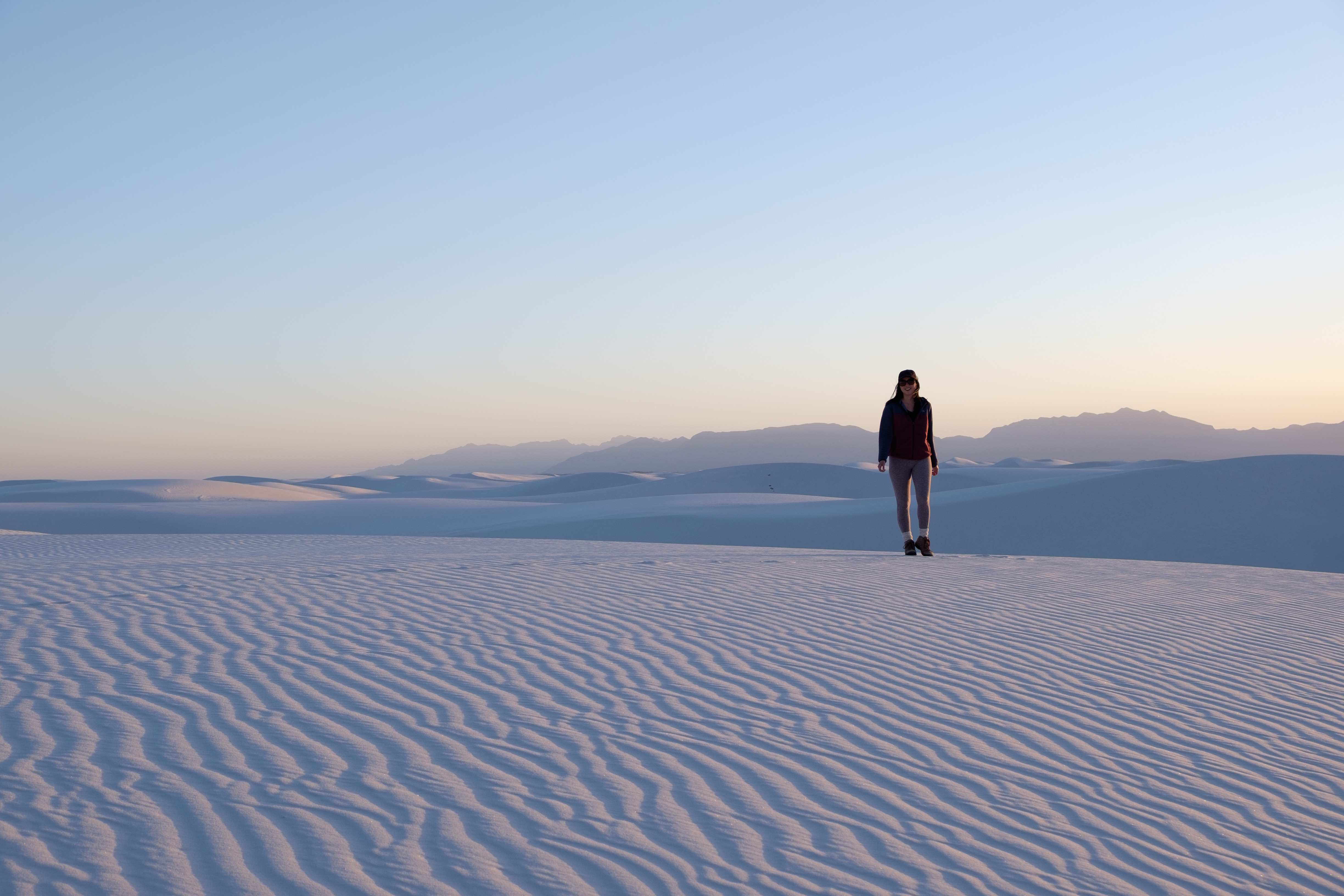
Table of Contents
Why road trip through the Southwest
My first time in the Southwest was in 2015 when we visited southern Utah. This is such a vast region and for that reason, our itinerary here primarily covers Arizona, Navajo Nation, and New Mexico. I am not always a fan of road-tripping because sometimes the wide empty roads become a little boring, and it feels like you’re in the car forever.
Not so with this region. In almost every long stretch of driving (most on our itinerary are 6 hours or less), there are beautiful views you would never see otherwise. It also harkens to the feeling of people who have lived in this region, the travels they would undertake to explore, trade, gather, and negotiate. Sometimes it can feel like you’re alone for miles and miles.
A few practical tips
We recommend renting a 4-wheel-drive for this, and be prepared to get a little dusty. Always have drinkable water on hand— buy water at stops and grocery stores and keep it in the car. If possible, purchase more than you ever think you will need. This region is very dry and at times very hot, and the risk of dehydration is significant.
We also recommend lots of snacks that feel healthy-ish (our preference), in case you come from a place with bountiful produce and find yourself needing some greens or fiber at some point! We brought seaweed snacks, instant oatmeal, dried fruit, blue corn chips, nuts, peanut butter and bananas, to name a few.
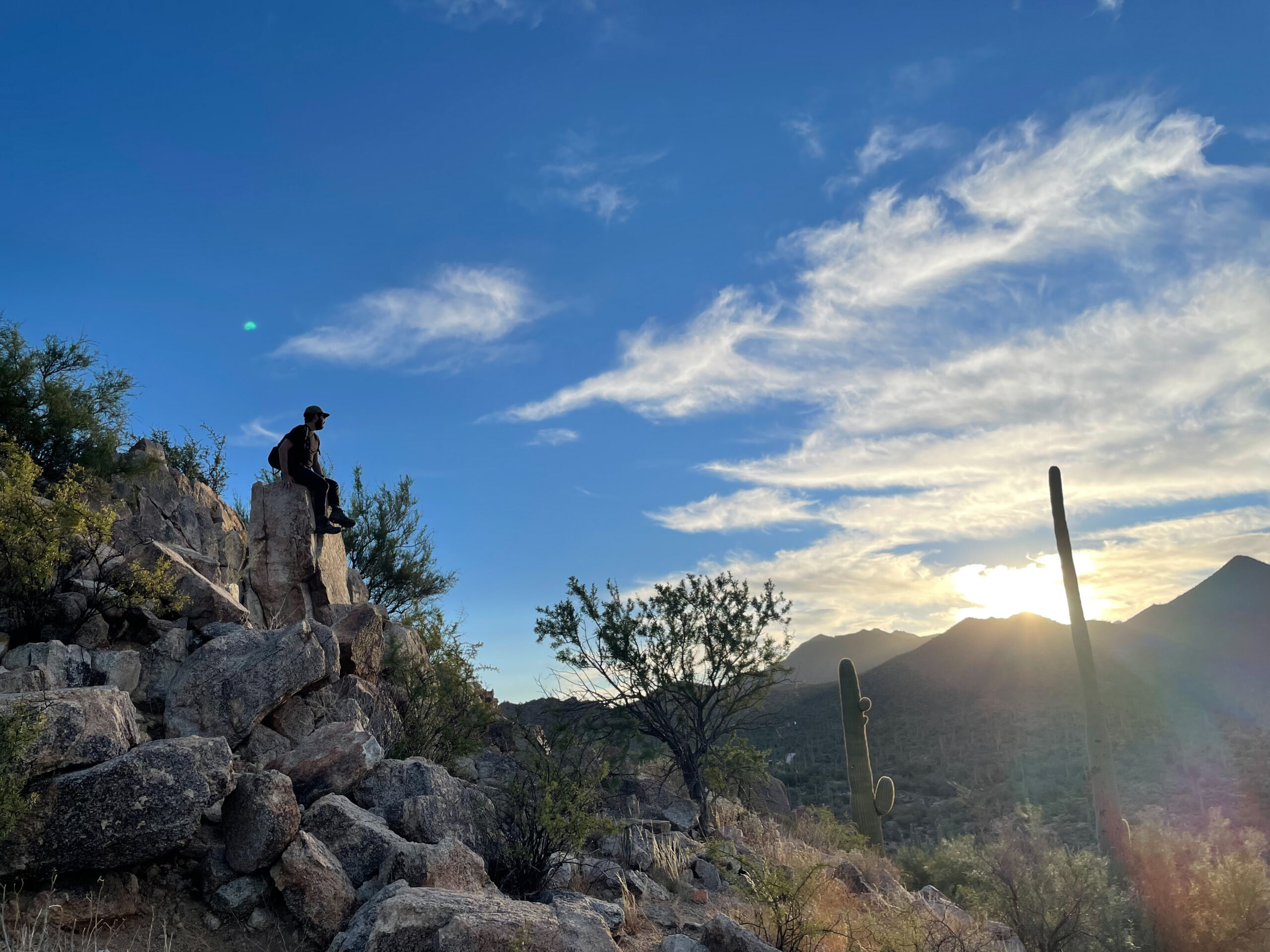
Where to start and end the trip
We flew into Phoenix Sky Harbor, which has direct flights from San Jose, California. From Phoenix, we got the rental car, purchased our snacks and supplies, and started on the way north to Sedona. I recommend beginning this way (and going clockwise, ending in Tucson before returning to Phoenix), as it puts Sedona at the beginning. Sedona is where we did the most hiking, so we were eager to spend our high beginning-of-trip energy there.
You can also take more time if you’re able; you can stop at places like the Grand Canyon, Vermillion Cliffs, Bryce Canyon, Mesa Verde, and Albuquerque! The way we arranged this trip was to keep the maximum stretch of driving at 6 hours or lower, to make sure there was time to rest and enjoy each stop.
Map: How we selected our stops
Planning this trip was so much fun! We started with knowing we wanted to go to Tucson to see family and friends, and also to Santa Fe. Then I spent a lot of time in Google Maps looking at different landmarks and cities in between, clicking and searching and reading. I also researched what others did to get a sense of the locations. For example, I had never heard of White Sands National Monument and it definitely offered the most beautiful sunset I have ever seen.
By far the most popular stops are Sedona and Santa Fe when we visited, but all of these places are deserve a bit of planning and reservations in advance. In particular, if you want to stay in Monument Valley (and get it almost all to yourself at sunset!), you’ll have to stay at one of two hotels there, with limited vacancy.
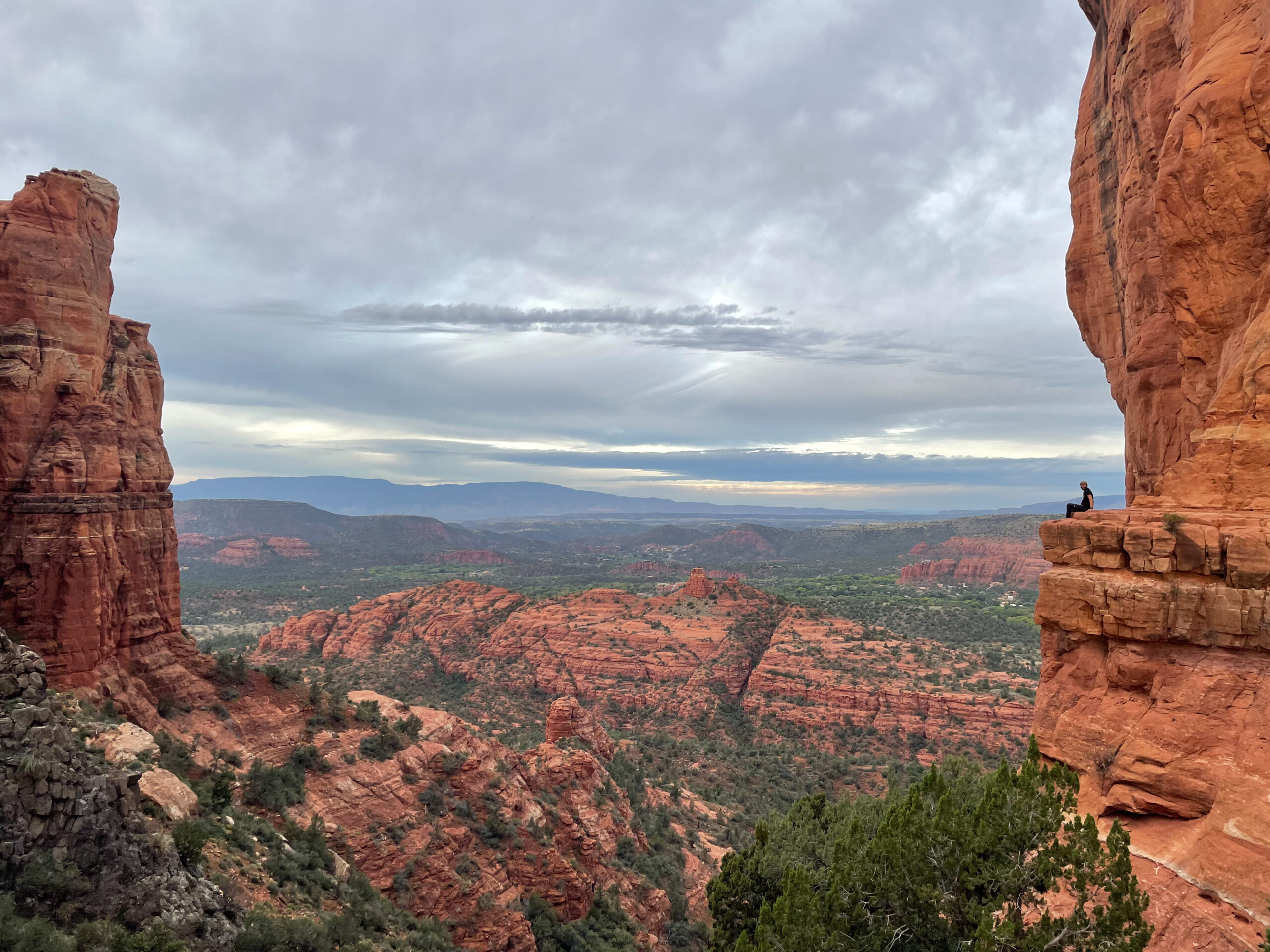
Sedona, Arizona
This was our first stop driving straight from Phoenix. I loved Sedona, its stunning landscapes and funky local culture. After seeing Sedona advertised for “girls’ weekends,” we were delighted to find that there is something for everyone. The most exciting attractions are definitely the hikes: there are so many and I was overwhelmed trying to select the ones that would work for our schedule, hiking ability, and the weather.
Our favorite hikes in Sedona
- Cathedral Rock
- Faye Canyon
- Devil’s Bridge
Where to stay in Sedona
I’m so glad we were able to snag an affordable room at Orchards Inn Sedona, because the view was such a treat to wake up to every morning. It’s also centrally located so you can walk to most things in town, including the Tlaquepaque Arts and Shopping Village, which I highly recommend to get a sense of the art and gifts available in this region.
I have to admit that we were not blown away by the food in Sedona. Maybe we did not get to the best spots, but overall the food was passable but not glorious (it will be in other parts of this trip!).
Drive from Sedona to Page: Visit old ruins
On the way from Sedona to Page, there are two incredible ruin sites that you have to see: cliff dwellings at Walnut Canyon National Monument and a village at Wupatki National Monument. Both are absolutely breathtaking— and give you a sense of how brilliant people were centuries ago when they lived in these difficult but beautiful environments.
Flagstaff is a destination all on its own, but if you’re driving straight to Page like we did, it’s a good place to stop for lunch.


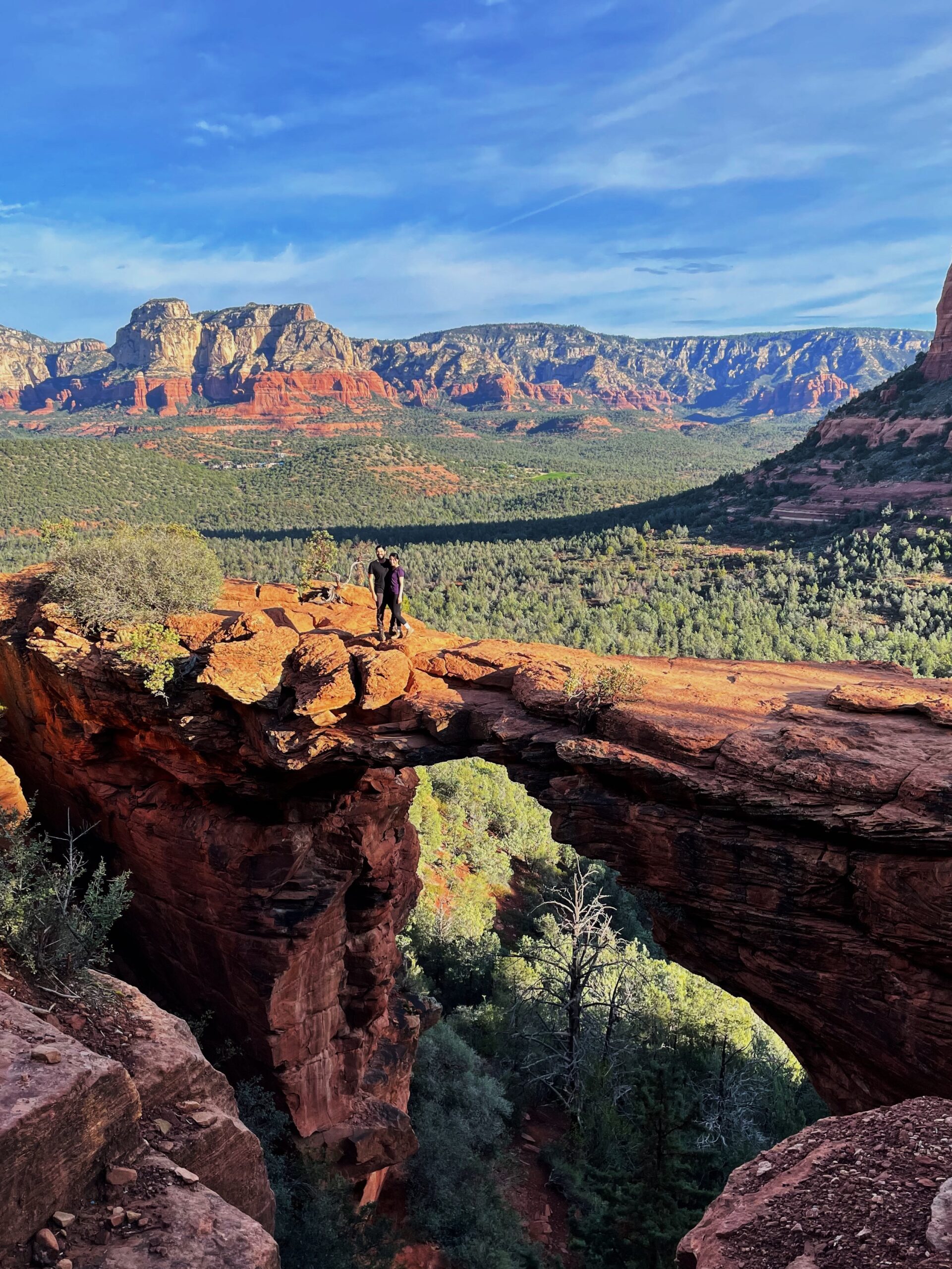
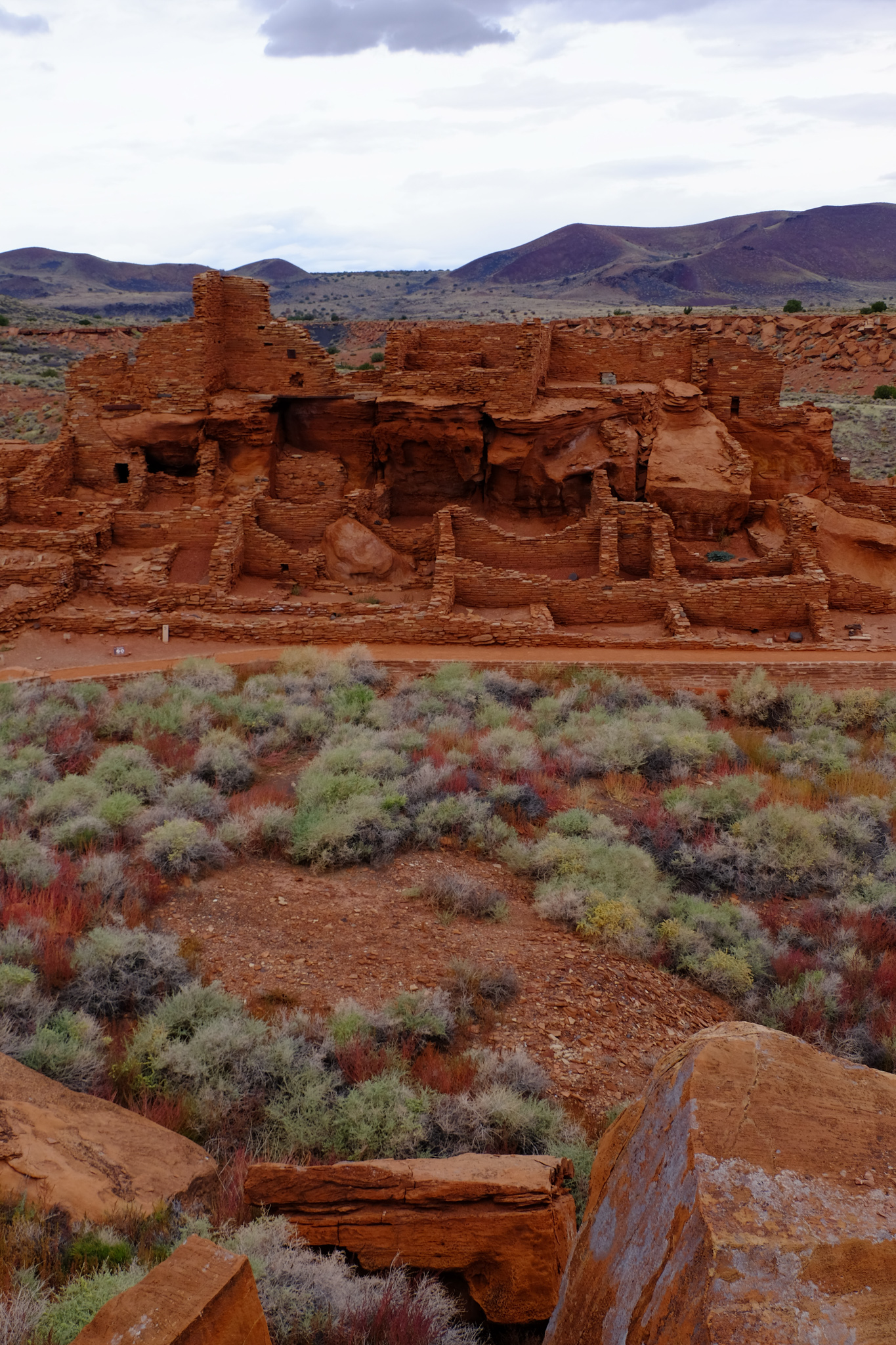
Page, Arizona
If it weren’t for the (in)famous light at Antelope Canyon, it would be possible to drive right past Page and not realize the treasures it holds. The canyons and Horseshoe Bend draw hoards of people every year, and despite the challenge of the crowds, it’s absolutely worth seeing both.
Horseshoe Bend
There are almost always lots of people at this site, but the best time to go is at sunset. Be sure to check the time of sunset before you head over, and try to arrive at least 30 minutes before. There are lots of different points from which to view Horseshoe Bend, so give yourself time to see it from different angles.
Antelope Canyon and Rattlesnake Canyon
A lot of people don’t realize that there’s more than one beautiful water-carved canyon in Page, and you can book tours to see both. You are required to be accompanied by a tourguide to visit the canyons so be sure to book ahead of your trip! The most popular slots are mid-day, when the light streams into Antelope Canyon, but those slots are both popular and expensive.
We went in the early morning and got to go see Rattlesnake Canyon first— we were the only people there with our guide, who gave us lots of incredible stories about growing up in Navajo Nation and hanging out in the canyons with his friends. You can book the tour here with Adventurous Antelope Canyon Tours.
Respect the land and everyone you meet
This should go without saying, but there are rules around visiting the canyons because people have disrespected— and, in the view of the native peoples, desecrated— this important land by not treating it with respect. Listen to the guides and do as you’re told! The land is sacred and we are guests here.
Where to stay and what to eat
There are a number of hotel chains here in Page, and you can select one that suits your preferences. We felt that only one night was sufficient here; again, just plan ahead.
Food in Page will feel a lot like American comfort food (read: fast food), but for those who eat poultry, we really liked Bird House. As far as fried chicken goes, it’s really delicious! Be aware of the enormous portion sizes, though.
Drive from Page to Monument Valley
This is a fairly short distance so you can get to your Monument Valley accommodations in the early afternoon, take a rest, and prepare for a sunset outing. As written below, I really recommend staying a night in MV as it gives you an opportunity to see more of it on your own.

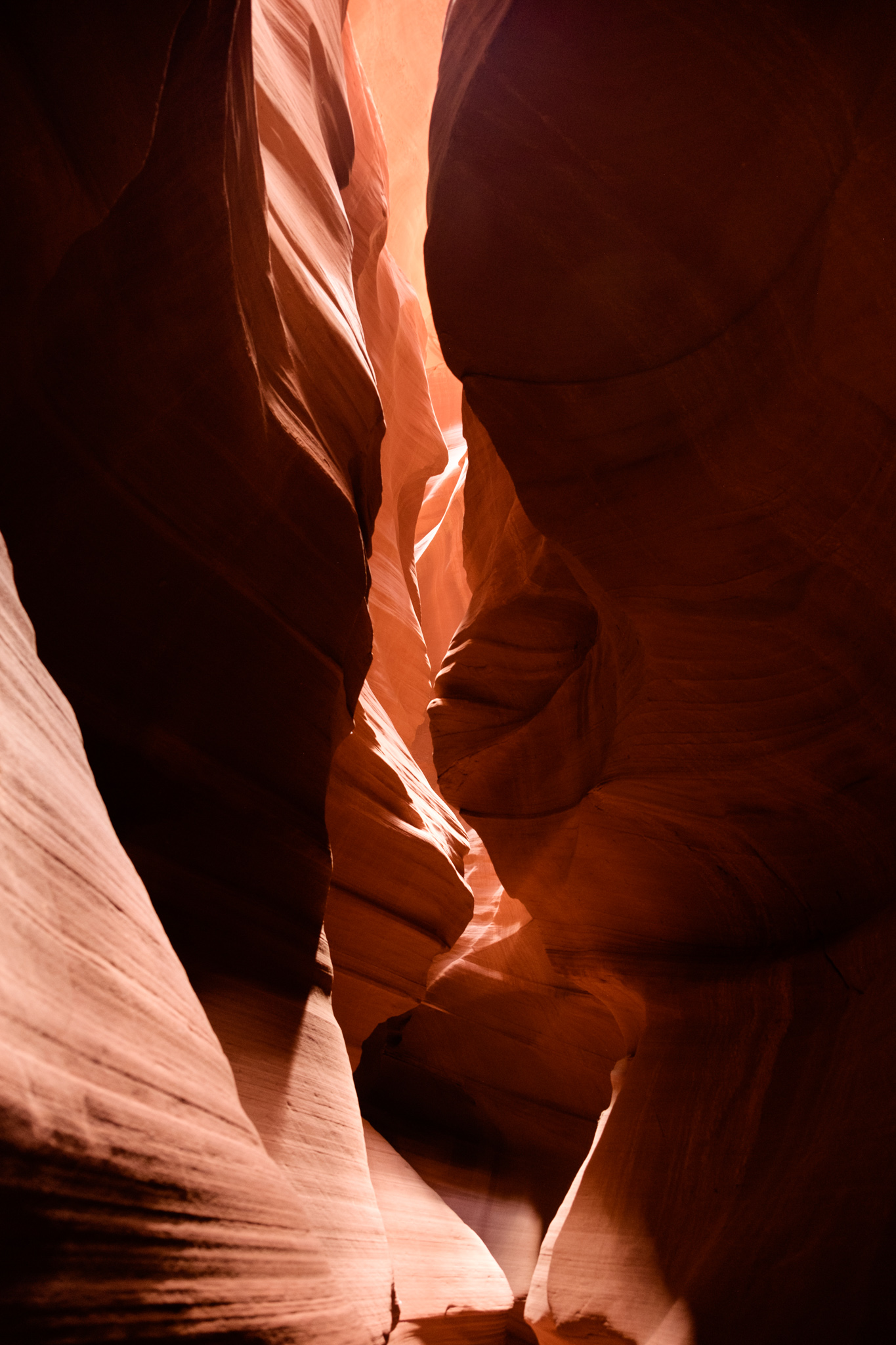



Monument Valley, Navajo Nation
Of all the iconic scenes in this region, Monument Valley might be the most famous. The incredible buttes, peaks and plateaus scattered throughout this region are just extraordinary. In their silent austerity, they remind us that we are only a small part of this mysterious, beautiful planet.
You can visit parts of Monument Valley on your own, but it’s much better to (again) go with a guide. The entire area is located in Navajo Nation and there are many local guides who will take you on a journey, pointing out special formations and accessing areas other visitors are not permitted.
Best time to visit Monument Valley
Due to its terrain, the region can be incredibly dry at times or thunderstorming at other times. Each season creates dramatic skies to admire, especially at sunrise and sunset. We visited in October and the evenings were a bit chilly but still lovely to be outside.
Perhaps more importantly, sunset is a fantastic time to aim for your tour of Monument Valley. There are some tours that hike the whole day, or go stargazing at night. However, for the widest burst of colors and photography bliss, sunset is perfect. The park area closes to outside visitors so make sure you have a guide! We used one of the guide listings found here and really enjoyed our time alone in the valley.
Where to stay in Monument Valley
If you’re going to tour the valley at sunset, you’ll probably want to stay there for the night. We loved our beautiful cabin at The View Hotel, which is one of two hotels there. Unfortunately the restaurant was closed, so it might be wise to pack your own food for this part of the trip! We did just fine with instant oatmeal, fruit, and our portable hot water boiler.
Because we were not going to drive anywhere as a daytrip from Monument Valley, we found one night to be sufficient there. Don’t forget to stop by the Trading Post at The View if you stay; they have beautiful jewelry, rugs, and pottery from local artisans!
Drive from Monument Valley to Santa Fe
This is a bit of a long stretch but doable in less than 6 hours with a stop for lunch. We left Monument Valley after breakfast and stopped in Farmington, NM for a quick (and very hospitable) New Mexican style lunch at Si Señor Restaurant. You could take a detour to Mesa Verde in Colorado, but it’s more than a handful of hours out of the way, so you would likely want to stay out there if you make the stop.
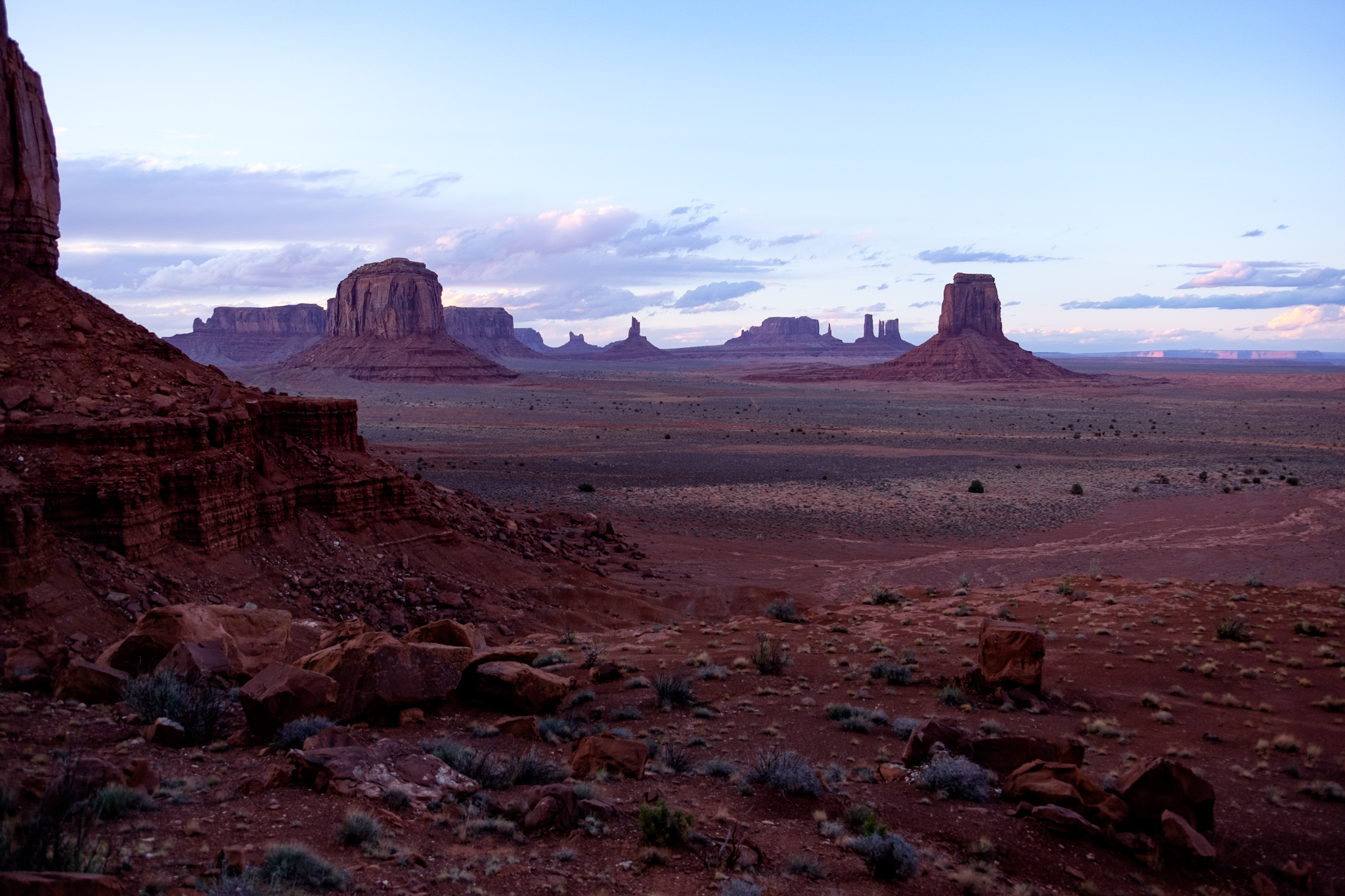


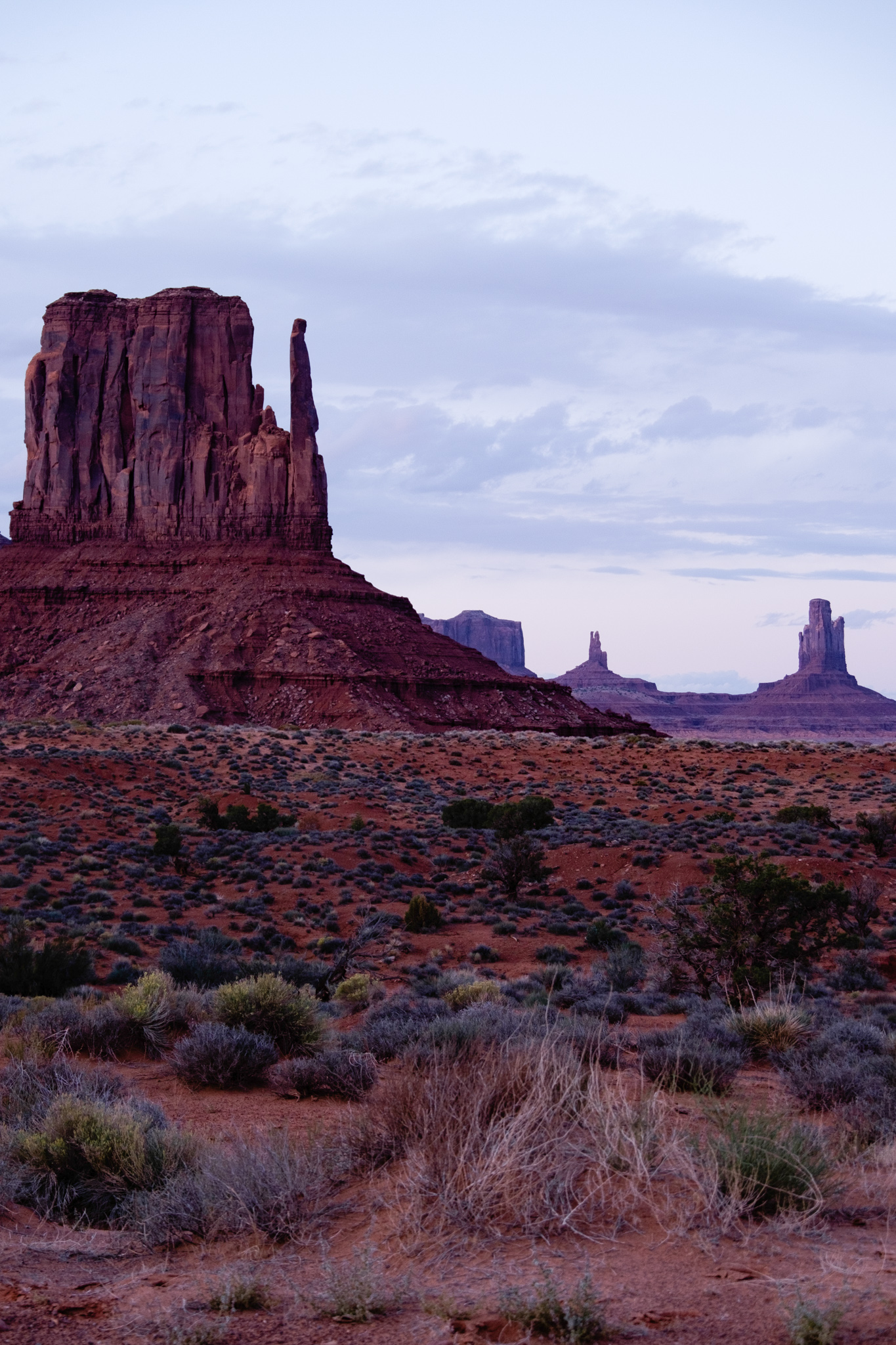
Santa Fe, New Mexico
Santa Fe quickly became one of my favorite US cities. Coming in after a long drive, you’re greeted by historical and traditional adobe homes with earthen walls and bright turquoise doors. Hot peppers strung up to dry are an essential part of the decor (and the food), while the gardens burst with succulent colors.
At a higher elevation, you may find Santa Fe to be cooler than the other places on this trip. You might spot fall colors on deciduous trees as well, like we did.
There are so many guides to Santa Fe and so many things to do— so I’ve added to the map our favorites. I always find it important to round out a visit with a bit of local history, art, culture, food, and nature, whatever those things mean to you.
Where to stay in Santa Fe
Unless you’re a luxury traveler, finding Santa Fe accommodations can be a bit of a conundrum. The historical (touristy) part of Santa Fe is worth staying in so that you can just pop out the door and be in the middle of everything. Unfortunately the prices are quite high here, so be sure to book your accommodation ahead of time. We found some deals at Hotel Loretto and the location was great, but I wouldn’t say the hotel is a luxury experience.
We spent 3 nights in Santa Fe and it felt sufficient to see what we most wanted to see, but we could have stayed longer.
Be sure not to miss…
Before going to Santa Fe, a good friend recommended the Aspen Vista Picnic Area, knowing we would be there at peak foliage season. If you can get to this quick Santa Fe outing in the fall, I highly recommend it— vast layers of aspen trees blanketed with gold leaves. Just bring a jacket, it was snowing when we got up there!
There are so many excellent museums and galleries in Santa Fe, but I really appreciated the New Mexico History Museum. It makes a valiant effort to tell the beautiful, brutal story of the region in an honest way, including the numerous wars and oppression that occurred. It helped us understand what led to the fascinating mix of flavor and aesthetic in the region, which made dining and exploring all the more meaningul.
The Santa Fe Botanical Garden is a delight, especially if desert-style landscaping is your thing. There are also a couple of gardens in Tucson and Phoenix that I highly recommend (on the map), as a point of comparison!
And of course, get yourself some pozole, red and green chile, and sopapillas because these flavors just iconic. There are a lot of restaurants that serve these traditional dishes and if you have a few days, try a few!
Because of the days we were visiting (and the pandemic phase), we were unable to visit the Georgia O’Keefe Museum and the Santa Fe Opera (I know). Both of these important places are not open or available all the time, so be sure to check in advance if you really want to see them. As for me, I’ll be coming back to Santa Fe eventually!
Drive from Santa Fe to White Sands National Park
This is an important one to time well, because you want to get to White Sands in the afternoon and stay for sunset. Plan the drive accordingly— and note that the fastest way is not to drive through Albuquerque (on the 25) but on the 285 to 54 highways! I would recommend arriving at White Sands at least 2 hours before sunset so that you can explore parts of the park and then make your way up the dunes for the final show.
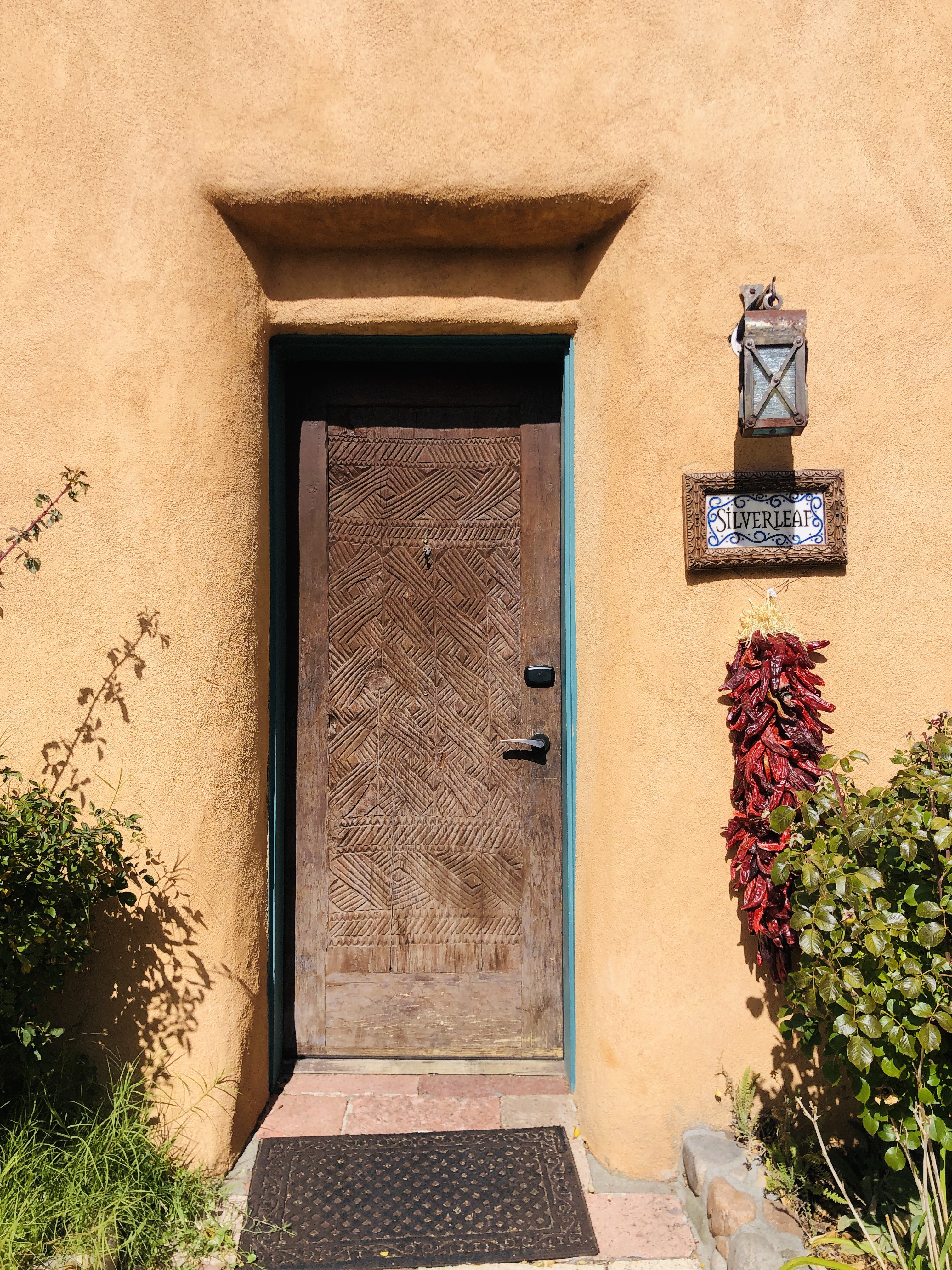
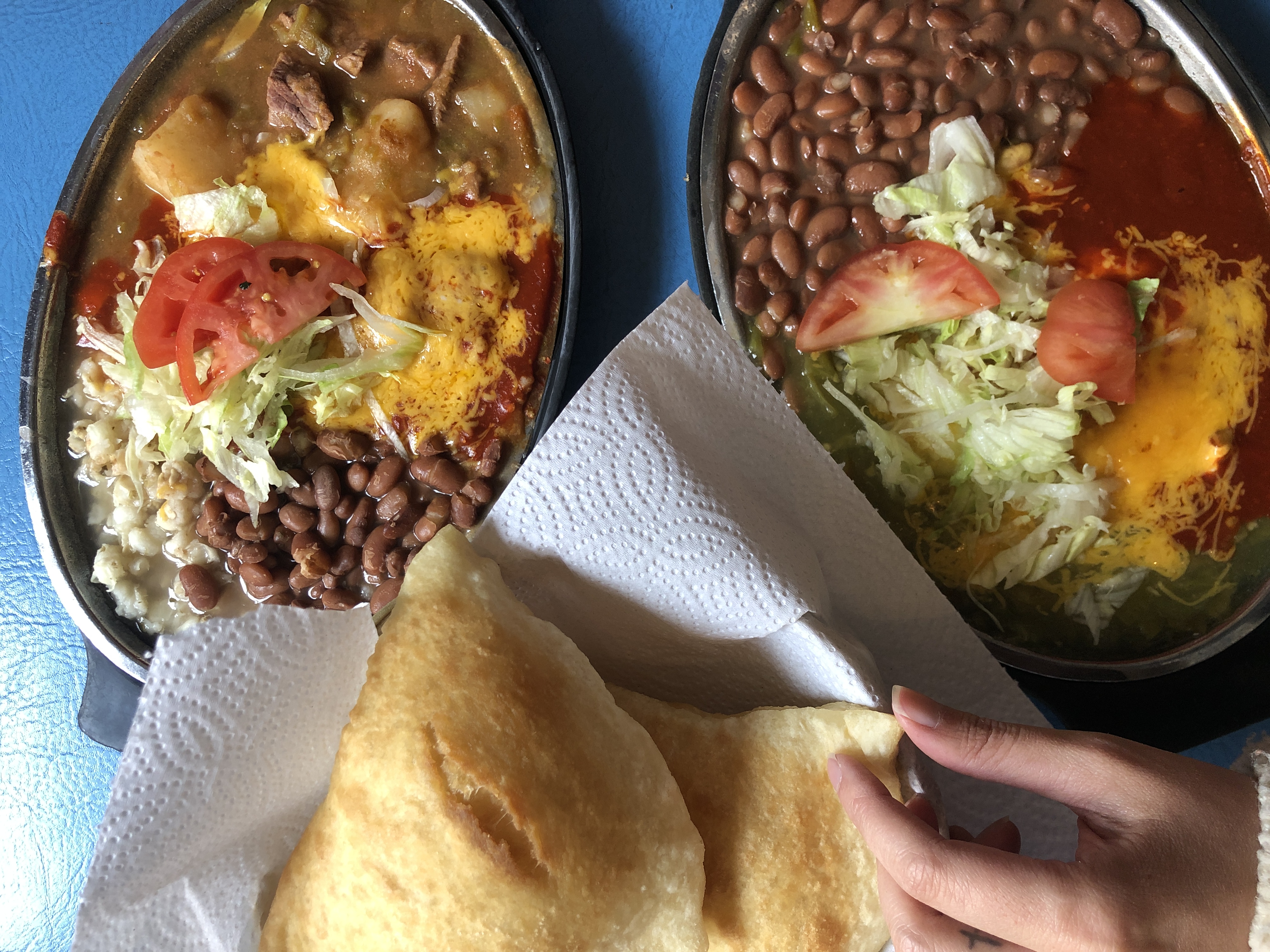
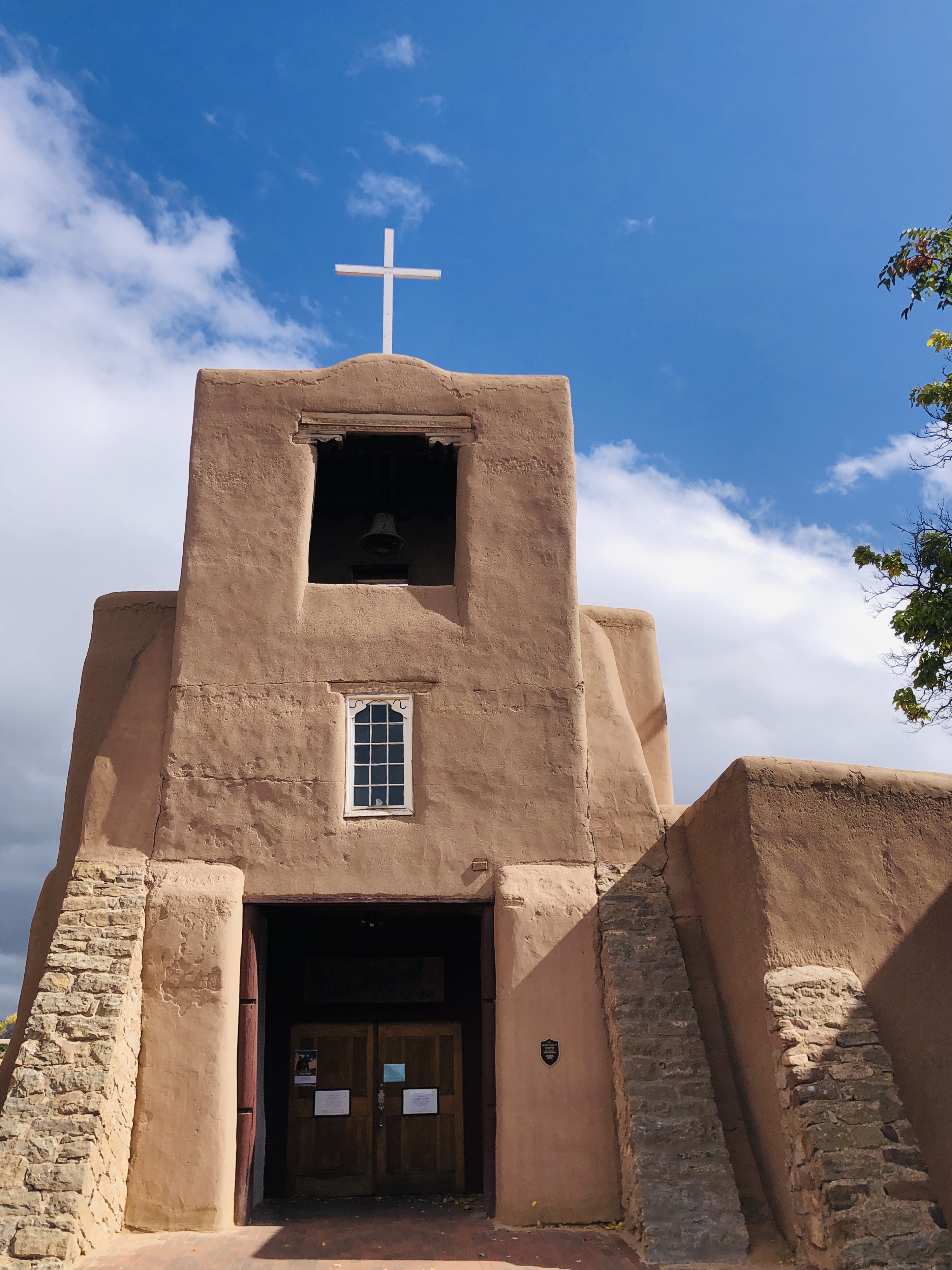
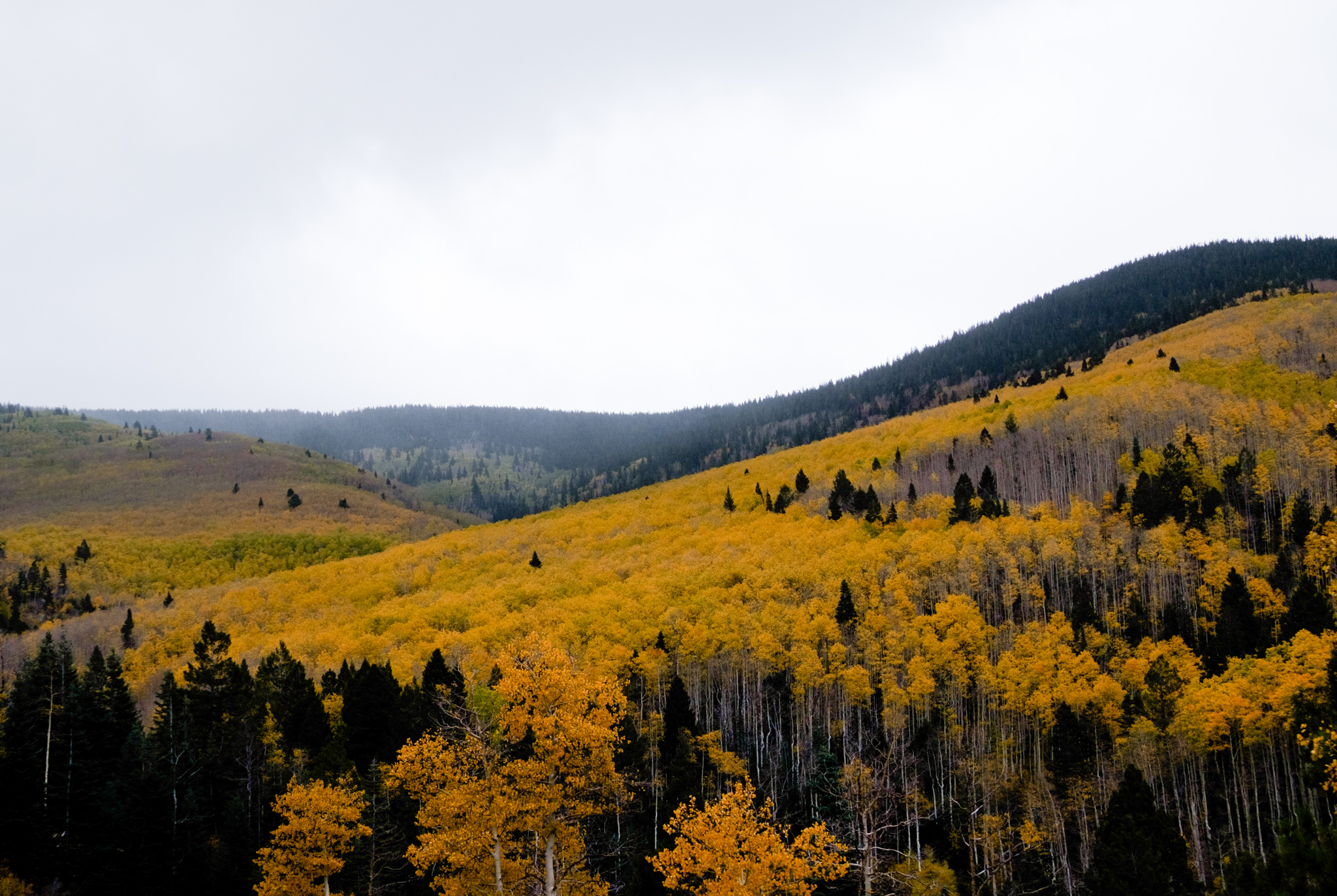
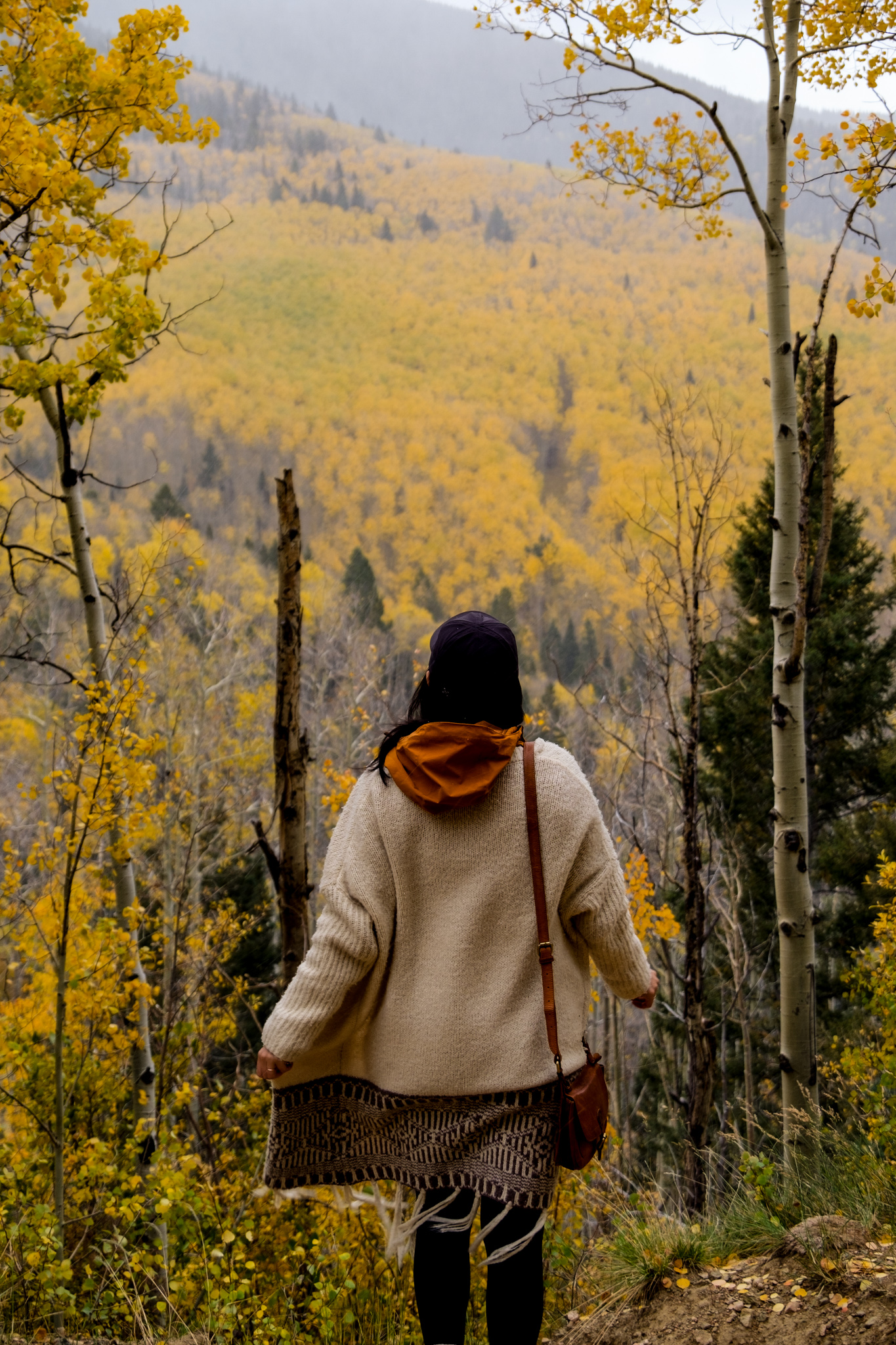
White Sands National Park, New Mexico
This was one of those gems I had never heard of, but in researching the region somehow stumbled across. White Sands is exactly what it sounds like— mounds and mounds of gypsum salt in the middle of sort-of-nowhere. Be ready to get sand everywhere and find it in your shoes months after this trip!
The best way to visit the park is to arrive in the afternoon several hours prior to sunset. You can pick up supplies at the visitor center and then drive into the park, where there are stops along the way. Some of the stops have boardwalks and signs to point the way, while others really leave you to your own navigation skills. Be cautious as you mount the sand dunes as it all starts to look the same as the sun sets. Keep an eye out for sign posts and when in doubt, follow your own footsteps back.
We stayed out on one of the dunes as the sunlight receded over the paper cut-out waves of sand. It was one of the most magical places I’ve ever been.
Where to stay: Las Cruces, NM
Once you leave the park, head toward Las Cruces, a medium-size city with plenty of basic accommodation. There is not too much to do here but you can relax a little bit for the evening before making the drive to Tucson the next day.
Drive from Las Cruces to Tucson, AZ
Once you’ve had a good night’s sleep and breakfast, drive the final long stretch from Las Cruces to Tucson. This is possibly the least pleasant drive because there is less scenery and more commuting trucks, but it is very doable with a bit of patience. Be aware that it is very hot and sunny on this drive so bring sunscreen, sunglasses, water, and plenty of snacks!
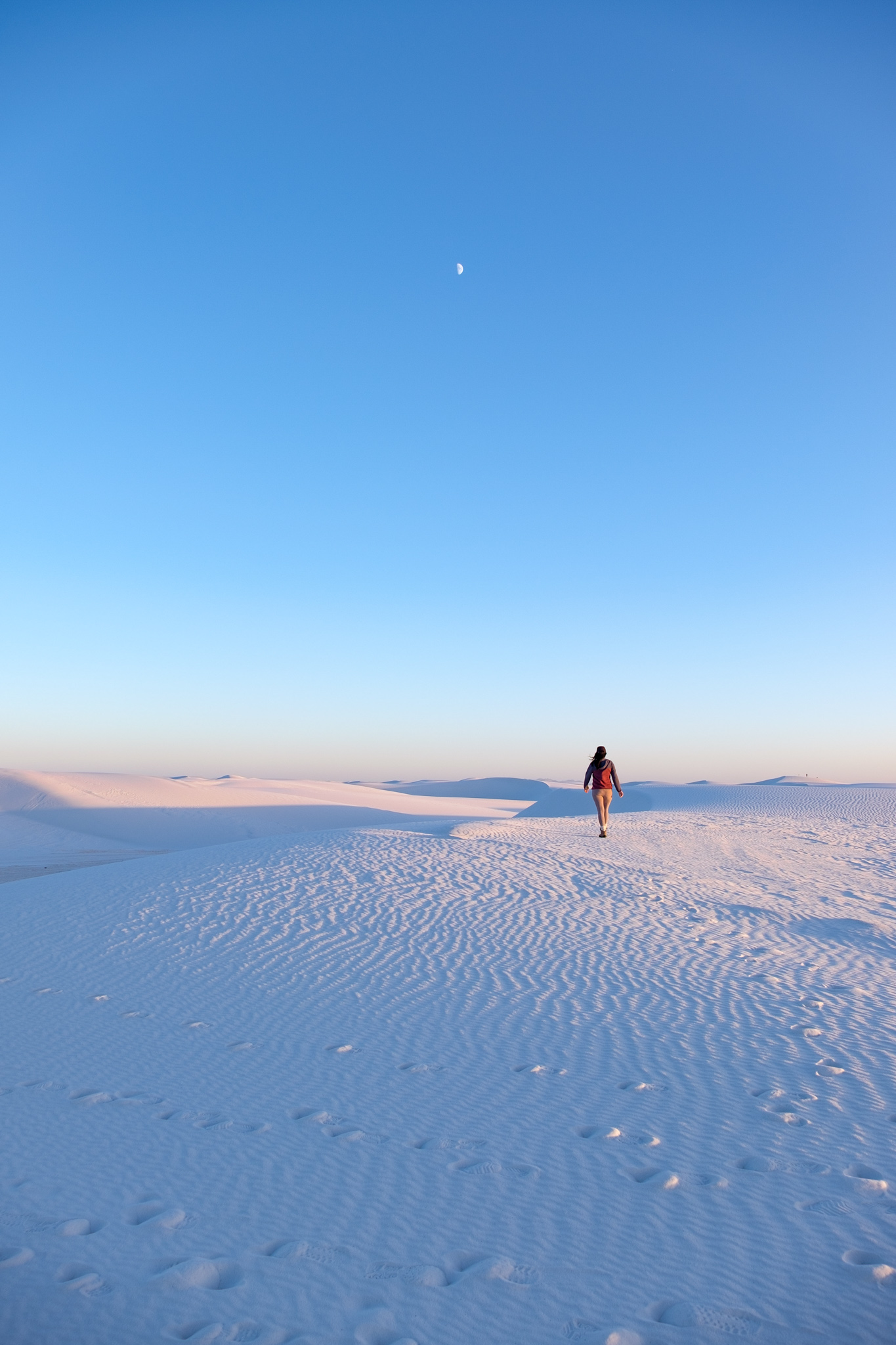
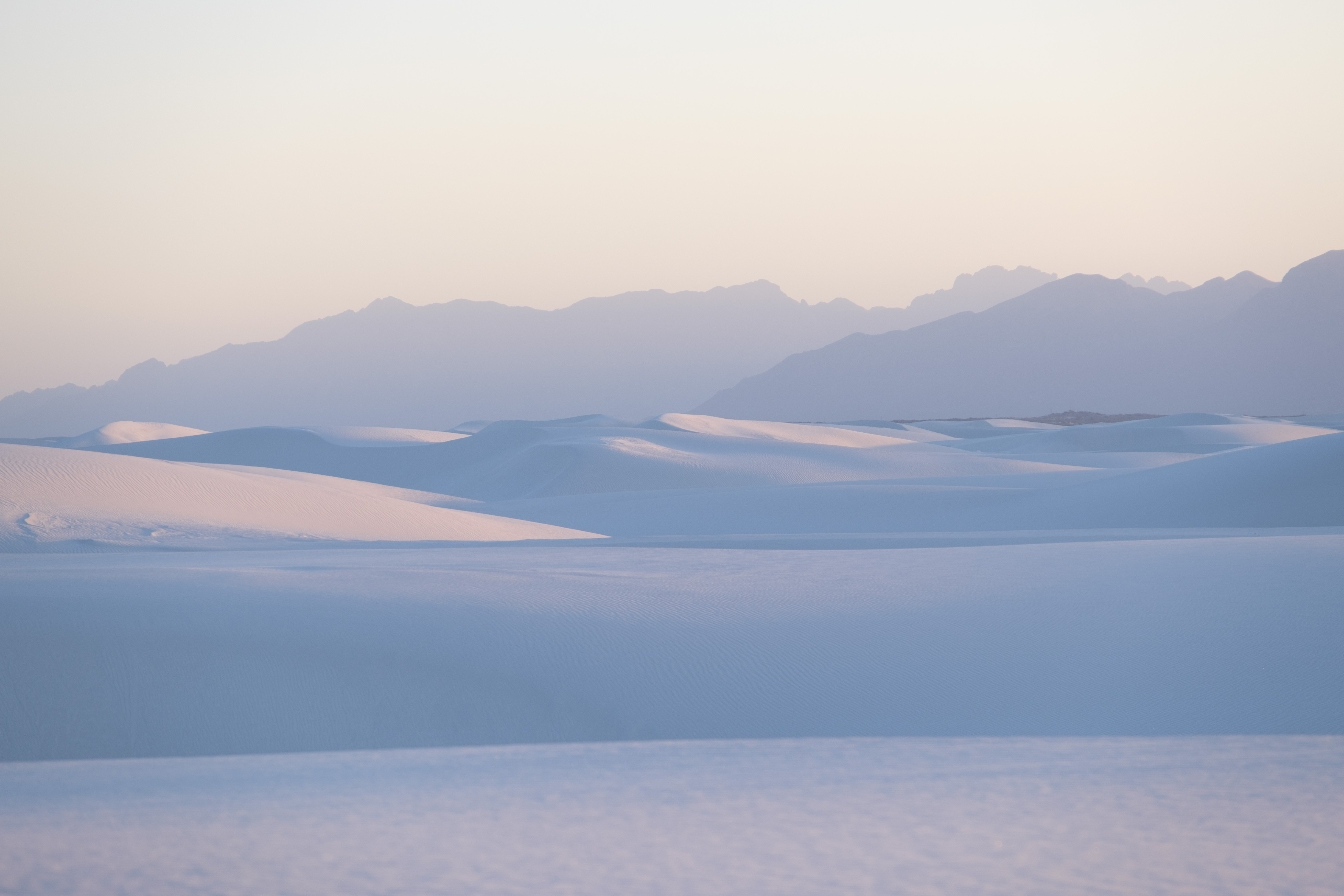
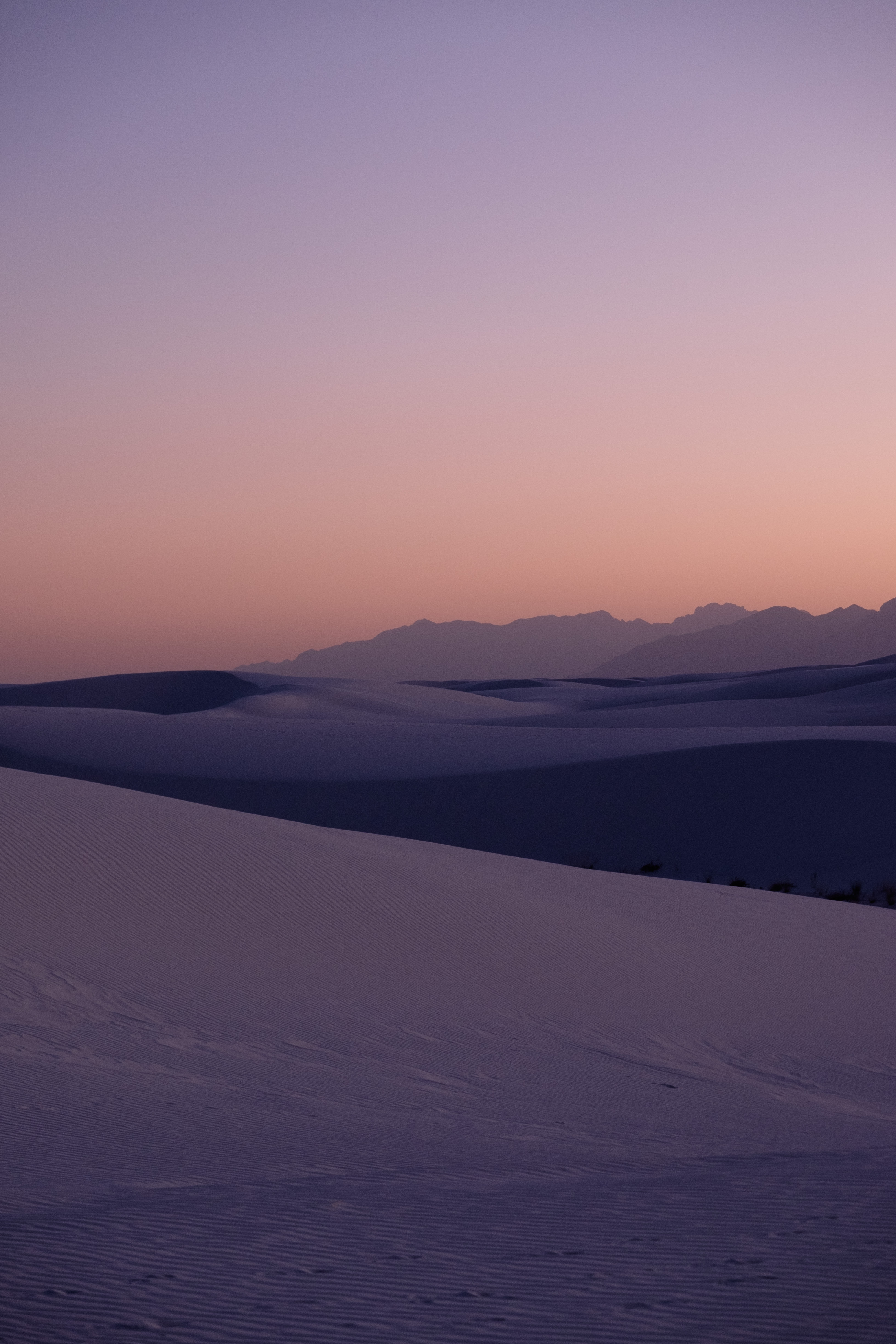
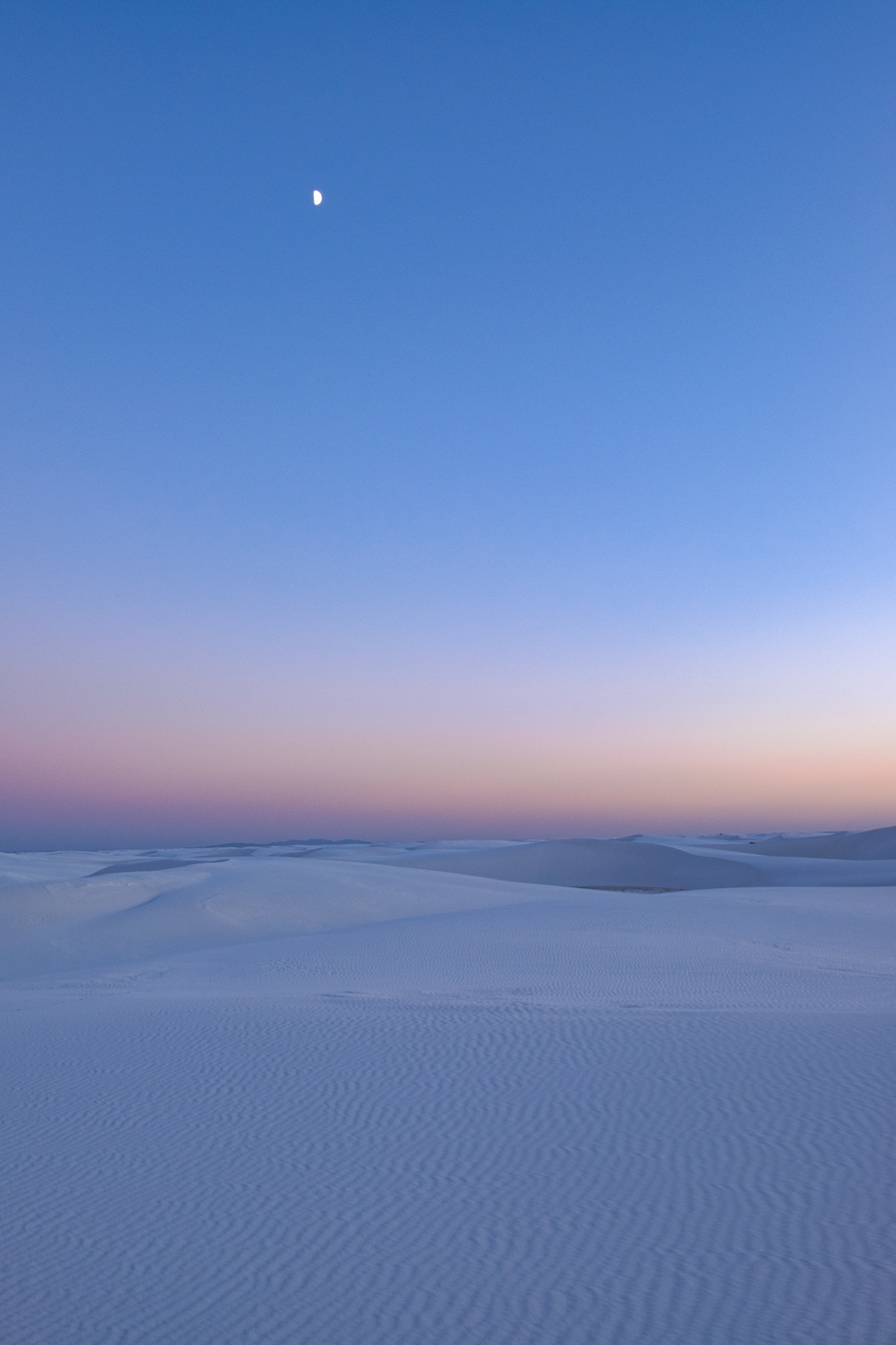
Tucson, Arizona
We focused most of our time in Tucson meeting up with friends and family members, but it is a great city on its own to explore desert landscapes and a unique dining scene! Tucson has the most stunning Saguaro cacti you will see on this trip and a few gardens that are lovely as well.
Be sure to visit the Saguaro National Park (we liked the West side of the park) early in the morning so you can see the cacti glow with the sun behind them. It is likely you will be the only ones there if you arrive before 8AM.
Another lovely place to visit is Tohono Chul, which offers a beautiful botanical array, a tasty lunch, and some outdoor artwork. Tucson has a botanical garden as well, which is great for desert landscape inspiration.
Where to eat and stay in Tucson
There are a number of luxury hotels in Tucson but they are a bit further out and more retreat-oriented. To stay in the city, we enjoyed Lodge on the Desert because of its nicely sized rooms, swimming pool, and easy access.
For dining, you absolutely have to visit Tito and Pep, which boasts a menu that is uniquely Tucsonian. The food is so fresh and creative!



Return to Phoenix
Get ready to depart as you make your way back to Phoenix. If you have time to spend in Phoenix before your flight, I highly recommend checking out the Desert Botanical Garden, one of the best-designed gardens in the United States! There are rows and rows of beautifully pruned desert plants, with colors ranging from the hottest reds to the coolest purples.
Meanwhile say farewell to the desert (unless you also live in one), and be prepared for the nostalgia to set in immediately.
There’s something special about this place, and it lives somewhere in my heart. I hope the same will be true for you.
Pin this guide for reference:
